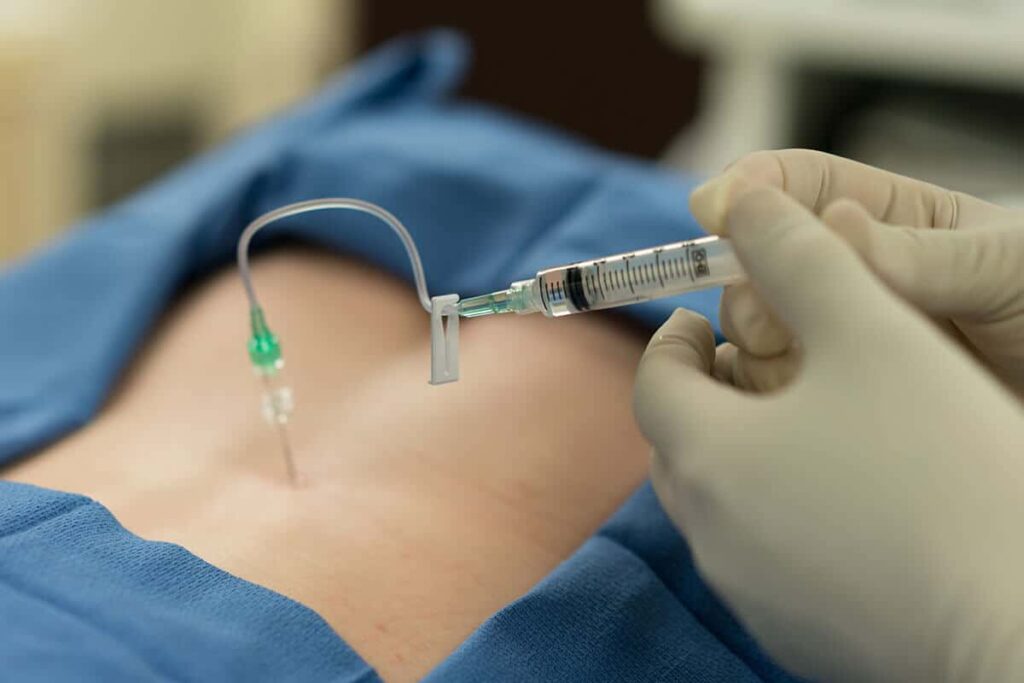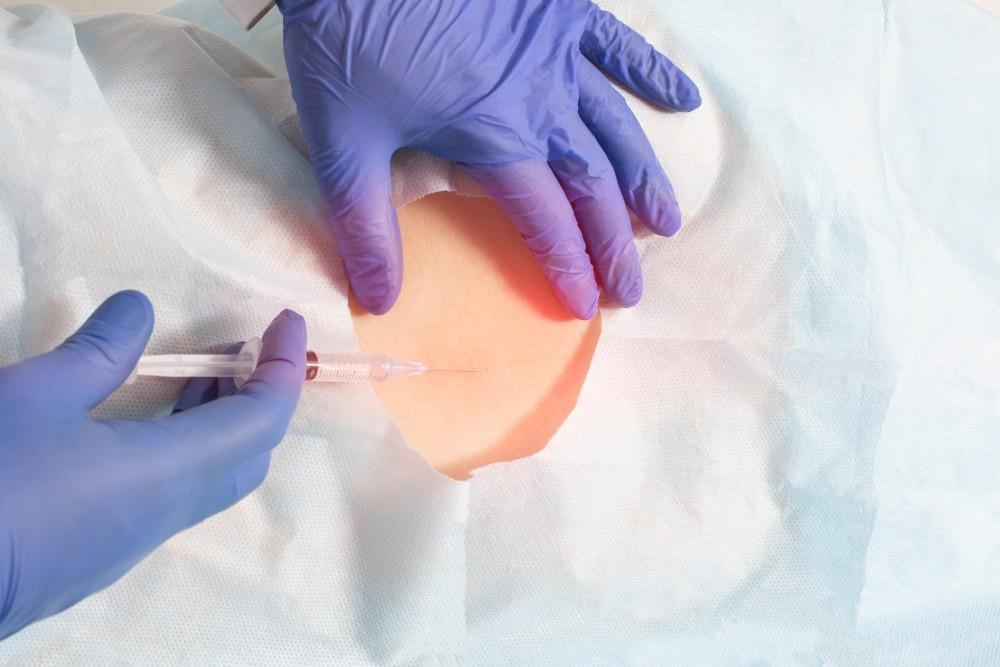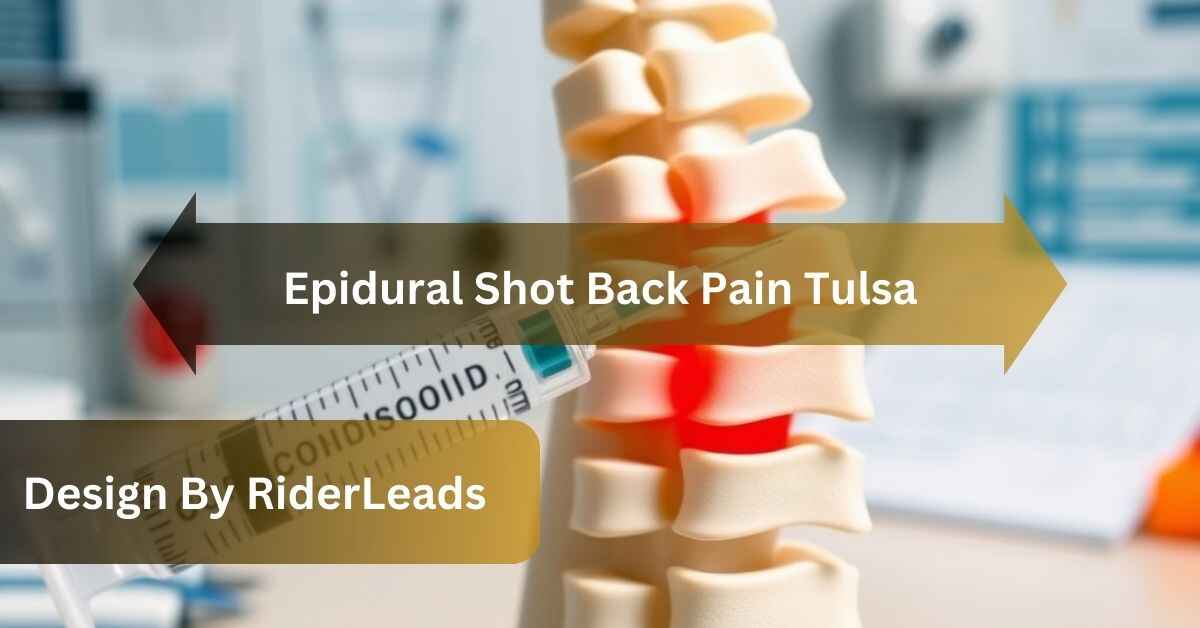Back pain is one of the most common health complaints in the United States, and it can be incredibly disruptive to daily life. In Tulsa, an epidural shot has become a go-to option for people suffering from chronic back pain. If you’ve been struggling with back issues and are looking for an effective treatment, you may want to consider the possibility of an epidural shot. This guide will walk you through what an epidural shot is, how it works, and why it might be a good option for your back pain relief.
What is an Epidural Shot?

An epidural shot, also known as an epidural steroid injection (ESI), involves injecting a corticosteroid medication directly into the epidural space surrounding the spinal cord and nerve roots. This space is found just outside the protective membrane surrounding your spinal cord. The purpose of the injection is to reduce inflammation and relieve pain caused by conditions such as herniated discs, spinal stenosis, or sciatica.
The injected steroid medication works by decreasing the inflammation around the affected nerves, which helps to reduce pain and improve mobility. Epidural injections do not address the underlying cause of the pain but can provide temporary relief, allowing individuals to focus on recovery with physical therapy, lifestyle changes, or other treatments.
How Does an Epidural Shot Work?
An epidural shot works by delivering anti-inflammatory medication to the areas surrounding the nerve roots that are inflamed or compressed. Here’s a more detailed look at how it works:
- Injection Site: The injection is typically administered to the lower back or neck, depending on where the pain is located. The doctor will carefully choose the correct site using advanced imaging techniques such as fluoroscopy (live X-ray) or CT scans.
- Medication Used: The corticosteroid medication used in the injection works to reduce inflammation around the nerves, providing pain relief. Sometimes, local anesthetics are also included in the injection to offer immediate pain relief.
- Pain Relief: While some patients experience immediate pain relief, others might take several days for the full effects to kick in. It’s important to remember that this treatment is temporary, and additional injections may be required for longer-term pain management.
Epidural injections are not a permanent fix for back pain, but they can significantly improve your ability to engage in physical therapy and other treatments that target the root causes of the pain.
Who Should Consider an Epidural Shot for Back Pain?
An epidural shot is often considered when more conservative treatments, such as rest, physical therapy, medications, or chiropractic care, have not been effective. It is especially useful for people who suffer from certain spinal conditions that cause inflammation around the nerve roots. Common conditions that may benefit from epidural injections include:
- Herniated Discs: When the gel-like substance in a spinal disc leaks out, it can put pressure on surrounding nerves, causing pain, tingling, and numbness in the back or limbs.
- Spinal Stenosis: Narrowing of the spinal canal can lead to pressure on the nerves, resulting in pain, numbness, or weakness in the legs and lower back.
- Sciatica: Sciatica occurs when a herniated disc or bone spur presses on the sciatic nerve, leading to pain that radiates from the lower back through the hips and legs.
- Degenerative Disc Disease: Over time, the discs in your spine may wear down and cause pain due to inflammation around the affected area.
- Facet Joint Arthritis: The joints between the vertebrae can become inflamed due to arthritis, leading to pain and stiffness.
An epidural shot can help provide relief from these conditions, allowing patients to resume daily activities and begin physical therapy or rehabilitation more comfortably.
Benefits of Epidural Shots for Back Pain in Tulsa:

There are several advantages to getting an epidural shot for back pain. Here are some of the key benefits that patients in Tulsa can expect:
Pain Relief:
One of the main reasons people get epidural injections is to reduce pain. The injection helps lower inflammation, which can make a big difference and let people get back to their regular activities. The relief can be enough for people to enjoy daily tasks again. While the pain may come back over time, the relief can last long enough to improve quality of life.
Non-Invasive Treatment:
Unlike surgery, an epidural injection is a non-invasive treatment, meaning no cuts are needed. This makes it a less risky and less painful choice for those who aren’t ready for surgery. Since it’s quick and doesn’t involve recovery from a big surgery, it’s a good option for many people. It can even delay or prevent the need for surgery in some cases.
Improved Mobility:
When the pain is reduced, people can move better. This can make a huge difference for those whose movement is limited due to back pain. Being able to move freely again helps people do physical therapy and other exercises that can help improve their health. It can also help them return to hobbies, work, or family activities they enjoy.
Quick Recovery Time:
Most people recover quickly after an epidural injection and can get back to normal activities soon. There may be mild soreness at the injection site, but it usually goes away in a few days. Compared to surgery, the recovery time is much shorter, and most people can go back to their routine without much delay. Simple care, like using ice or taking over-the-counter pain medicine, is often enough to manage any discomfort.
Lower Risk of Side Effects:
The risk of serious side effects from an epidural injection is very low compared to surgery. The injection can help reduce pain without needing a more complicated procedure. While some people might experience mild side effects, they usually go away quickly. Serious problems are rare, which makes epidural injections a safe option for many people with back pain.
What to Expect During the Epidural Shot Procedure?
The epidural shot procedure typically lasts about 20 to 30 minutes. Here’s a detailed breakdown of what you can expect during the procedure:
Preparation and Consultation:
Before the injection, your doctor will discuss your medical history, the procedure itself, and any potential risks. They may also review your imaging results (X-rays, MRIs, or CT scans) to identify the best injection site. This helps ensure the injection is targeted accurately for the most effective results.
Anesthesia:
Local anesthesia is used to numb the area where the needle will be inserted, ensuring that you feel minimal discomfort during the procedure. In some cases, sedation may also be offered to help you relax. The goal is to make you as comfortable as possible during the process.
Injection:
The doctor will use a needle to carefully inject the corticosteroid medication into the epidural space. Using imaging techniques like fluoroscopy ensures that the needle is correctly placed. This precision helps avoid damaging any nearby nerves or tissues.
Aftercare:
After the procedure, you’ll be monitored for a short time to ensure there are no immediate complications. Most patients are able to go home the same day, but you may be advised to rest and avoid strenuous activities for a day or two. It’s important to stay hydrated and follow any aftercare advice from your doctor.
Post-Procedure Instructions:
Your doctor will provide instructions on how to manage any temporary soreness or side effects. It’s important to follow these instructions closely to ensure the best results. If you experience any unusual symptoms, don’t hesitate to contact your doctor for guidance.
Risks and Side Effects:
While epidural shots are generally safe, there are some risks and potential side effects to be aware of, including:
- Infection: Although rare, there is a small risk of infection at the injection site.
- Bleeding: If you are taking blood-thinning medications, there may be a slightly higher risk of bleeding.
- Nerve Damage: In very rare cases, nerve damage can occur from the injection, though this is extremely uncommon.
- Temporary Pain: Some patients may experience temporary pain or discomfort at the injection site.
- Headaches or Flushing: Side effects like headaches or facial flushing can occur, especially if the medication enters the bloodstream.
It’s crucial to discuss these risks with your healthcare provider before undergoing the procedure.
Epidural Shot Costs in Tulsa:
The cost of an epidural shot can vary widely depending on several factors, including the healthcare provider, the specific procedure, and your insurance coverage. On average, an epidural injection in Tulsa can cost between $500 and $2,000. Many insurance plans cover the procedure, but it’s important to check with your insurance provider to understand your coverage and out-of-pocket costs.
FAQs:
How long does the pain relief from an epidural shot last?
Pain relief can last from a few weeks to several months, but it varies from person to person. Additional injections may be required for long-term pain management.
Is the epidural shot procedure painful?
Most patients experience only mild discomfort during the injection due to the local anesthesia used. Any soreness after the procedure typically resolves within a few days.
How soon can I return to normal activities after the procedure?
Most patients can resume light activities within a day or two, but it’s important to avoid heavy lifting or strenuous exercises for a short period after the procedure.
What should I do if I experience side effects after the injection?
Contact your healthcare provider if you experience persistent pain, headaches, or other unusual symptoms after the injection
Conclusion:
Epidural shots can be an effective solution for people suffering from chronic back pain. While they are not a permanent cure, they offer significant pain relief, which can improve mobility and quality of life. If you live in Tulsa and are considering an epidural shot, it’s important to consult with a qualified healthcare provider who can assess your condition and determine whether this treatment is right for you.
By reducing inflammation and alleviating pain, an epidural shot can provide the relief you need to start feeling better and get back to doing the things you love.











